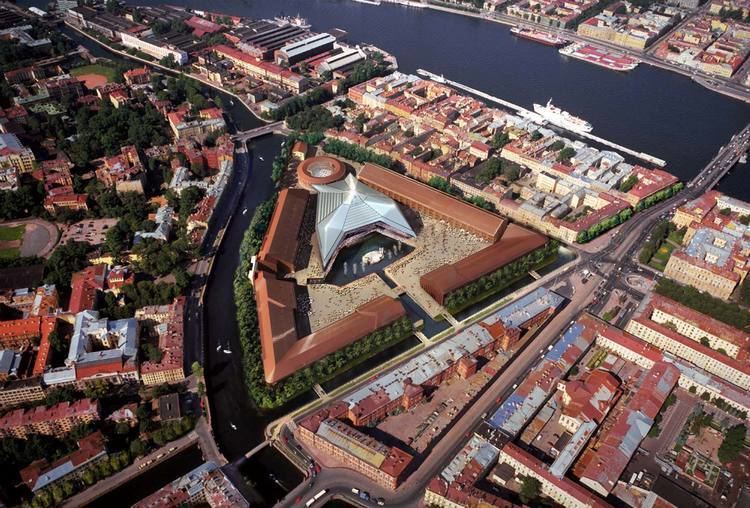 | ||
Similar Admiralty building - Saint Pet, Moika Palace, Saint Isaac's Cathedral, Menshikov Palace, Old Saint Petersburg Stock Exc | ||
New Holland Island (Russian: Но́вая Голла́ндия) is a historic triangular artificial island in Saint Petersburg, Russia, dating from the 18th century.
Contents
- Map of New Holland Island St Petersburg Russia 190121
- New holland island
- History
- Recent developments
- References
Map of New Holland Island, St Petersburg, Russia, 190121
New holland island
History
The island was created in 1719, when the newly built Kryukov Canal and Admiralty Canal connected the Moika River with the Neva. The triangular island took its name after a number of canals and shipbuilding facilities that rendered its appearance similar to Amsterdam. Peter the Great took the opportunity to create a naval port, including a wooden palace for his own use.
During the following centuries, the island belonged to the Russian Admiralty, which would adapt the plot for its various needs. Originally, there was a minor shipyard for rowing boats. In 1732, the Admiralty engaged architect Ivan Korobov to construct a network of basins and wooden warehouses along the island's perimeter in order to store lumber for shipbuilding.
In 1765, Savva Chevakinsky was ordered to rebuild the warehouses in brick but without customary stucco decoration. By 1788, when the project was halted, Jean-Baptiste Vallin de la Mothe had designed and supervised the construction of a highly pitched Neoclassical arch over the canal. This magnificent red-brick gateway to the island, known as the New Holland Arch, is flanked by massive Tuscan columns of red granite.
New Holland did not achieve its present appearance until the building of a naval prison in 1828–29 and a basin for naval architects in 1893. Aleksei Krylov used this basin for testing new models of ships between 1900 and 1908. The most powerful radio station in Imperial Russia was launched there by the General Staff of the Navy in 1915.
After the Russian Revolution, the 18th-century buildings of New Holland Island fell into neglect, serving time as military barracks, warehouses and (most recently) offices for various commercial enterprises.
Recent developments
On Navy Day in 2000, New Holland was opened to the public for the emplacements project (1997–2000), an art project created by artists Françoise Dupré and Roxane Permar with support from Russian artists, including Lyudmila Belova and Tatyana Nikolaenko, involving over two dozen artists altogether.
In 2004, the Ministry of Defense evacuated the buildings, which were to be refurbished for hotels and clubs to a design by Norman Foster, Baron Foster of Thames Bank, until the consortium running the project ran into difficulties.
In 2010, a new project was established, under the control of Roman Abramovich, with space for galleries and a museum, possibly to house Abramovich's art collection, acquired with the help of Daria Zhukova. The island opened to the public in 2011. Work Architecture Company (WORKac) of New York is working on the project. The planned £256m complex is intended to combine commercial and residential properties with the restoration of monuments that are protected by UNESCO. A branch of the Centre of Contemporary Art (based in Moscow) is also planned.
